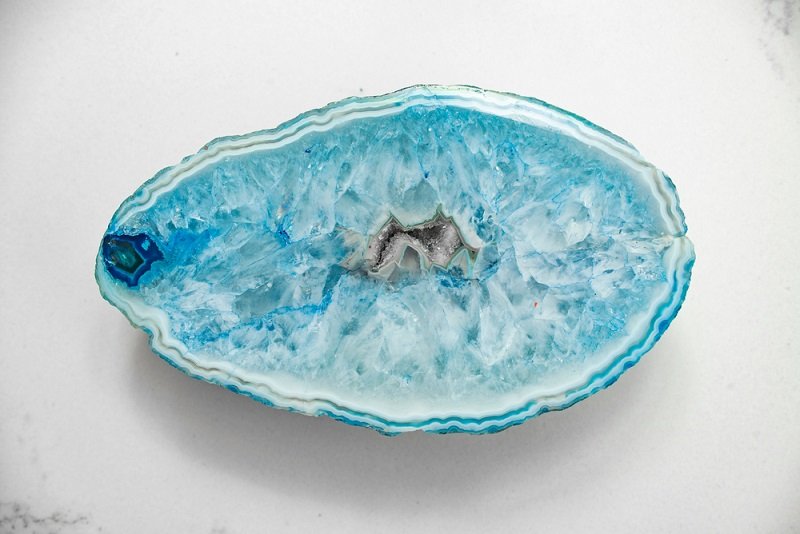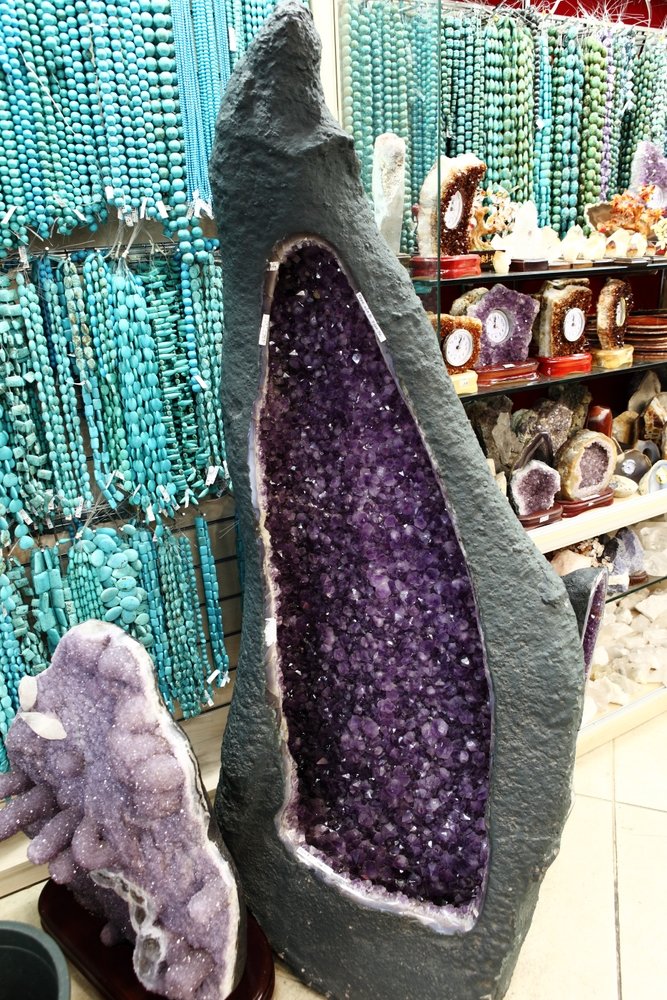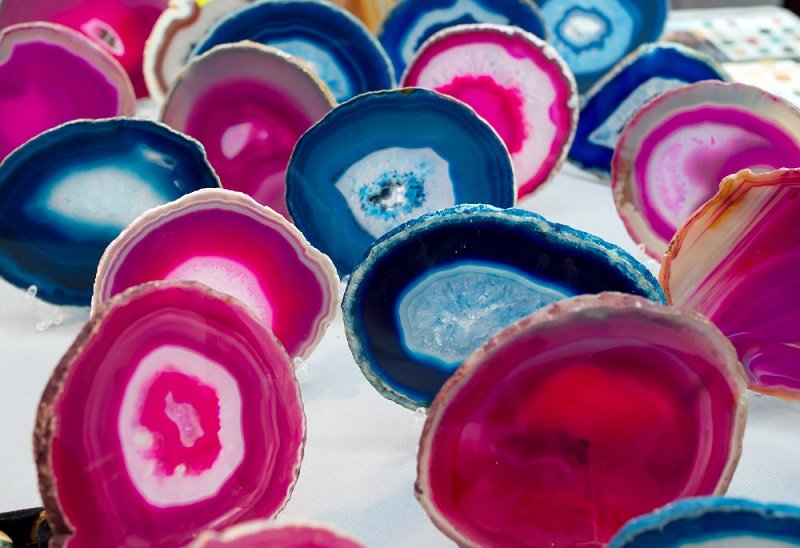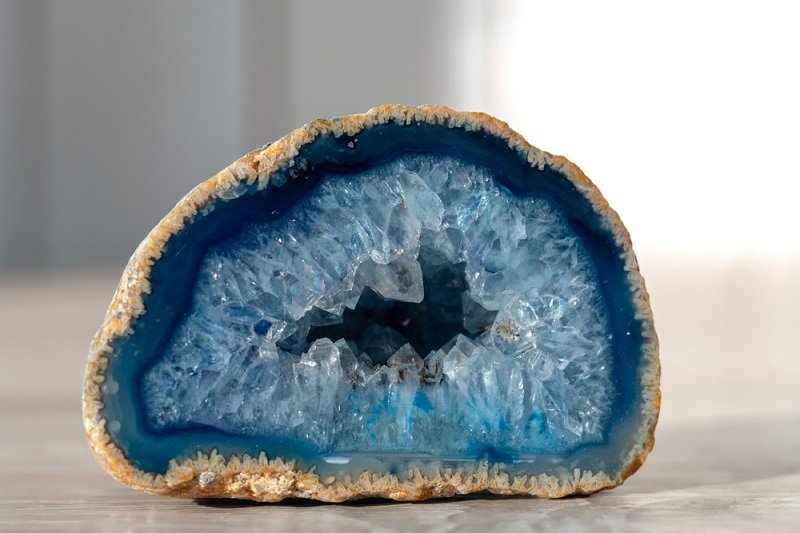All About Fake Geodes
One of the main concerns for any rock collector is coming across fakes. Learning how to spot them is one of the basics of the hobby, and it’s not as hard as you’d think. If you’re still learning, however, it always helps to have just a bit of guidance.
That’s what I’m here for. We’re going to dig into the world of fake geodes and answer some of your questions, beginning with are there fake geodes?
- How To Tell If a Rock Is A Geode (Tips and Techniques For Rockhounds)
- What is the Difference between a Thunderegg and a Geode?
Are There Fake Geodes?

Well, yes. But there’s fake everything out there, the question is whether or not it’s meant to fool collectors or just to be an interesting object in its own right.
In the world of rock collecting, few things are more frustrating than running across fakes. Trickery is rather common in the mineral collecting world, unfortunately, so learning how to source and identify fakes is one of the first things you should do.
There’s more than one sort of fake. They range from plastic piles of junk that kind of look like the real thing, all the way to entirely synthetic stones created through complicated chemical procedures.
Fake geodes, those that are entirely constructed, are a thing.
But they’re unlikely to be sold to you directly as a geode, they’re often made of resin and parts of larger sculptures. They can easily be identified: they’ll readily scratch with any kind of steel tool and feel wrong in the hand.
I’ve seen anecdotes of entirely synthetic geodes grown that can be identified by a lack of internal flaws, but this is unlikely. It’s most likely someone who misheard people talking about synthetic gemstones and transferred the property to geodes.
Geodes vs Vugs
Now, not everything sold as a geode is actually a geode. The ones labeled as a geode are often vugs found in basalt, with the outer edges trimmed down to create a vague geode shape. They’re not strictly a spherical or semi-spherical formation with a hardened outer layer, but instead a pocket of crystals filled inside of a hard rock.
The difference is minor for a collector, but an important distinction for a geologist.
These are sometimes labeled as fake by those who are prone to jumping the gun. It’s easy to see why: they don’t have the typical outer geode layer and if you’re not familiar with the stone you’ll find cut-down basalt looks quite a bit like concrete.
The vast majority of amethyst “cathedrals” are in the same boat. They’re from the inside of a basalt flow and when the vug is found the miners cut around it and then trim down the exterior to reduce the weight for handling and shipping.

Like many stones, faking geodes really isn’t a profitable affair. They’re already cheap and many of them end up in countries like India where stone cutting is a big industry.
That said, there is one common type of “fake” geode we need to discuss.
Dyed Geodes
Quartz or calcite geodes can be dyed using the same process as that used to color agate slices. Strongly colored geodes are invariably dyed unless they happen to be amethyst.
These dyed geodes are cut and then soaked in the dye for weeks or months. The dye works its way through pores and cracks in the material in order to create the illusion of a strongly colored geode.

The vast majority of these are labeled as dyed. Remember what I said earlier about geodes being cheap? Those that end up dyed will experience a price increase for being dyed since they’re mostly decorative objects meant for casual fans of rocks.
Dyed geodes can be identified the same way as any other dyed stone. The color showing up most strongly in cracks and crevices is a dead giveaway, but few geodes have strong color anyways. The strongest colors you’ll find are in high-grade amethyst from Brazil, there are no natural bright green or deep blue geodes.
Whether or not you want to display these is your own choice. I usually don’t place them with other mineral displays but I’ve had a few of them over the years.
How to Detect a Fake Geode

If you think you have something fake on your hands, it’s time to get a bit of testing done.
Visual Inspection
Visual inspection is the best spot to start. Dye, as mentioned above, is the most common “fake” that’s done to geodes. They’re sometimes sold at high prices to the unwary as some kind of rare oddity.
Check around the exterior edges of the hardened geode. Does it look like a bunch of little layers of compact, hard stone? This exterior chalcedony found in the majority of quartz geodes is hard enough to take it simply wouldn’t be worth the effort.
I’ve never seen anyone attempt a fake geode, even in an art piece, that wasn’t simple quartz or amethyst crystals. Take a look, they should be hexagonal in structure and often tightly packed together. Amethyst may have color zoning, but the color won’t gather in the cracks.
Hardness Testing
Hardness testing is your next best bet. Calcite will scratch with a knife, but it’s not faked very often. Scratching quartz with a knife is borderline impossible due to the hardness difference and it’s a good way to easily check.
Overall Feel
Like any other stone (barring amber), a geode should also feel a bit cool to the touch. If it feels warm or plastic then you don’t have a real geode in front of you.
On occasion, people will make a “geode” by sticking a bunch of crystal points in polymer clay, in which case the exterior will make the fake obvious but the crystals will still feel right.
Altered vs Fake
Testing may need to be done on rare occasions, but the truth of the matter is that geodes are far more likely to be an altered stone rather than something truly fake.
However, dyed geodes do serve an important purpose even for those who only want natural stones. You can use their description to vet a seller, anyone who sells a dyed geode as natural is already up to some shady business and should be avoided.
So, there you have it. Fake geodes are rare and easily tested, while the majority of dyed specimens are labeled correctly.
Still, as a beginner in the hobby, it’s always important to keep asking questions and expanding your knowledge base. Learning about fake stones is definitely an important part of that.
- Online rock and mineral club for collectors of all levels!
- Find community with like-minded rock and mineral enthusiasts.
- Monthly Giveaways!
- Free Access to Entire Digital Library of Products (current and future products)*


